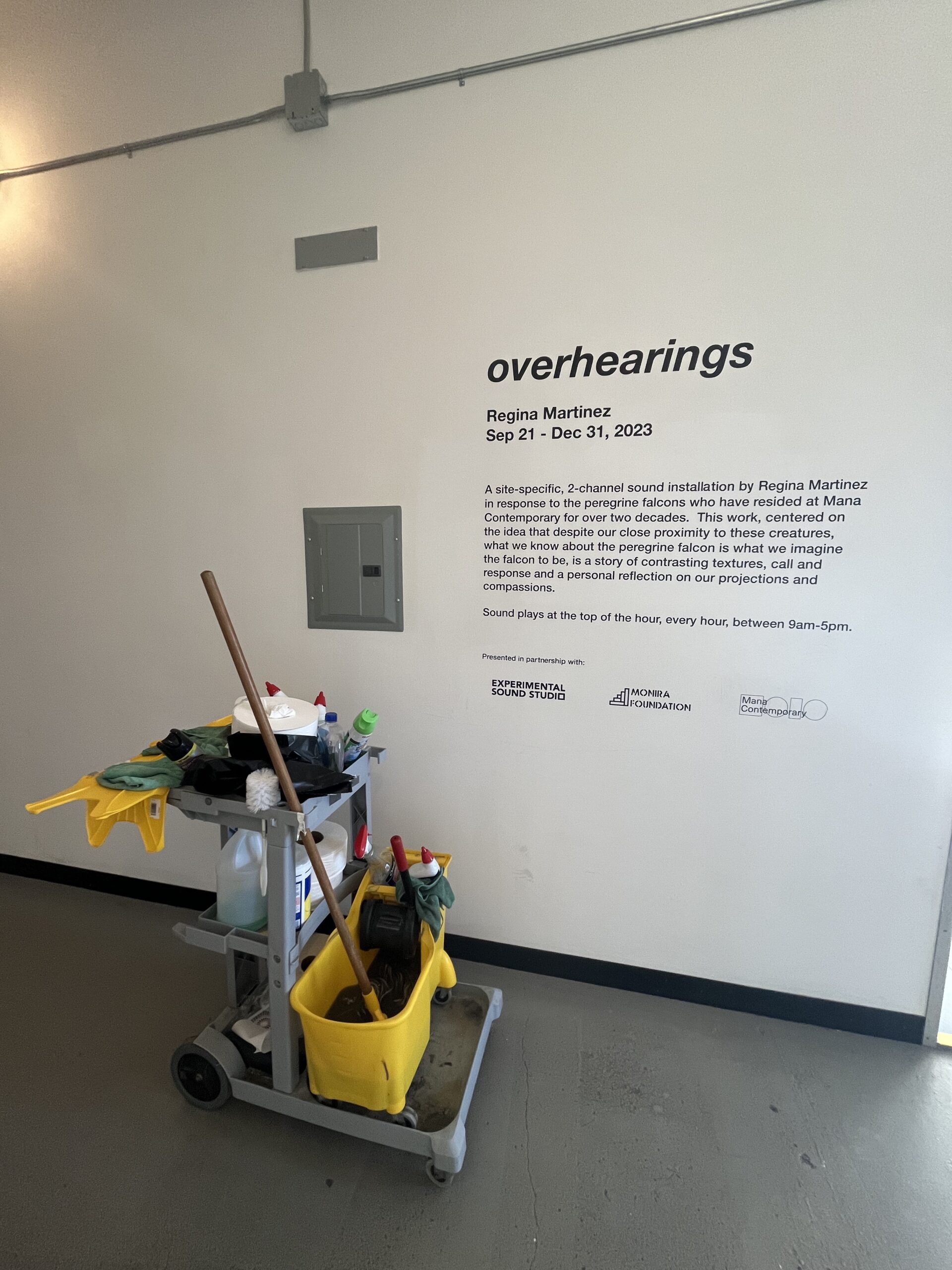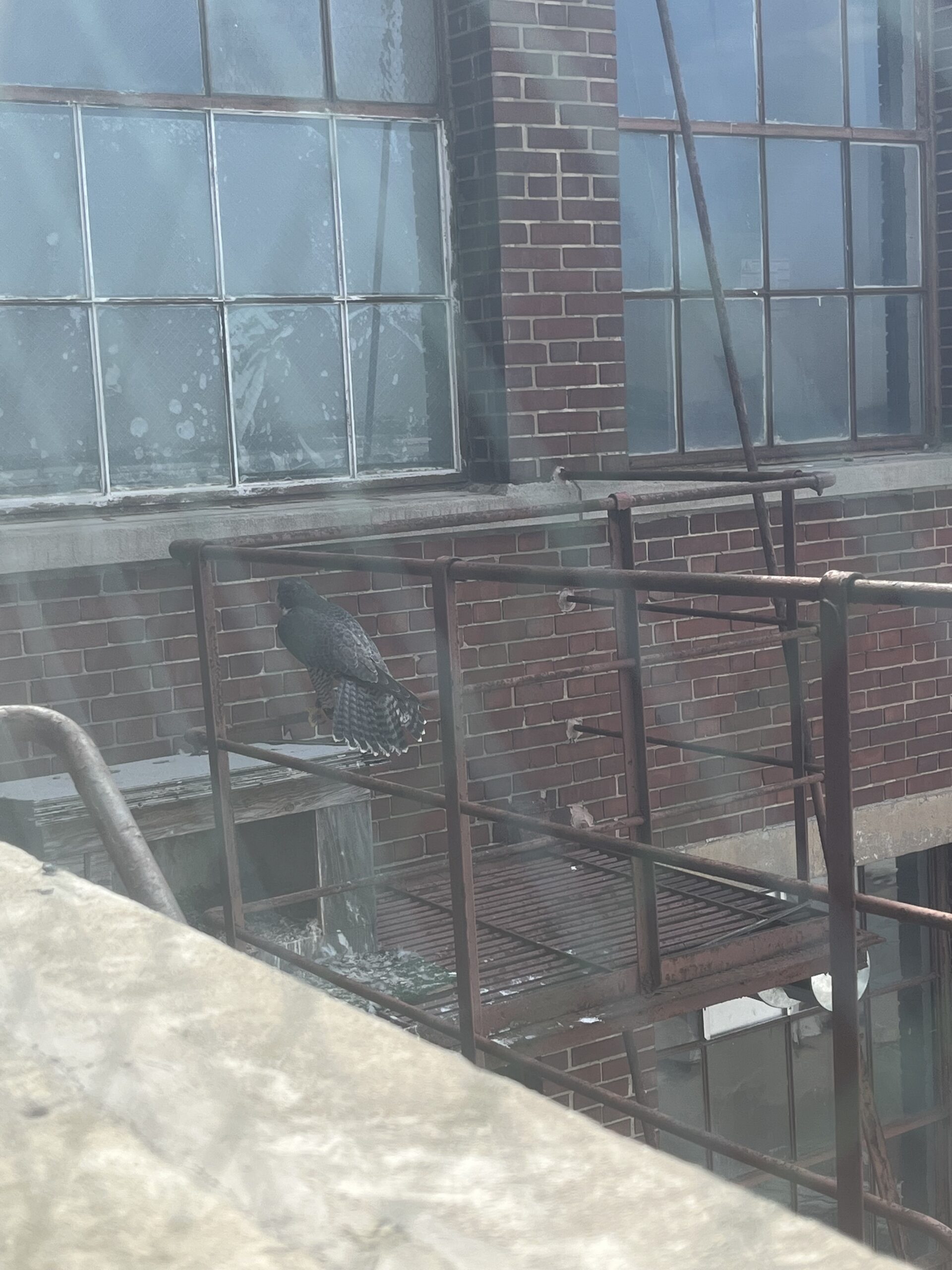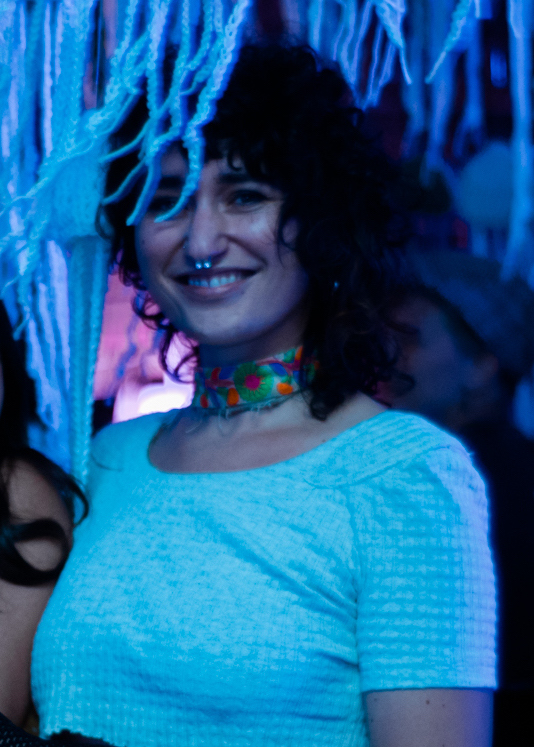
For most people, the restroom is simply a place they visit out of necessity every day—but, for Regina Martinez ’21, it became the perfect location for her recent sound art installation at Mana Contemporary Chicago, due in part to the restroom’s “intimate relationship to self,” as she describes it.
In early Spring 2023, in partnership with Experimental Sound Studio, the Monira Foundation and Mana Contemporary Chicago placed an open call for sound installation proposals. The topic? A response to peregrine falcons. The installation site? An artist-selected public space inside the Mana Contemporary building—just steps from High Concept Labs, where Martinez spends time as an artist in residence.
But the building houses more than art studios and exhibition spaces. Since 2000, it has also been home to a peregrine falcon nesting site. Every spring, a mating pair returns to lay eggs. After hatching, Field Museum staff tag the nestlings and capture blood samples to track the spread and health of the peregrine falcon population.
“Showing up at this building every week for my own residency while knowing that peregrine falcons also live here was a subtle reminder that humans aren’t the center of everything,” she explains. “When I read that Experimental Sound Studio was involved, I was more inclined to apply. They can be very supportive, no matter where you are on your technical sound journey.”
Being commissioned to work with the sounds of birds was also powerful for Martinez, connecting her to potent memories. Her mother has an affinity for birds, and her grandmother lived with uncaged birds in her home. The music of songbirds was engrained in her childhood.
A Perfect Pairing: Birds and a Bathroom
As part of her proposal, Martinez chose the fourth-floor restroom as the installation location—right down the hall from High Concept Labs.
“I think about restrooms as a place for gossip, a place to disappear, a place to take care of yourself, a place for rest,” she explains. “They’re also a place to listen—not necessarily for the entirety of the installation, but for however long you’re there. I wanted to create something you could check in and out of, entering and exiting the sound story as naturally as you would the restroom.”
To capture recordings of the birds, she visited Mana Contemporary alongside Mary Hennen, director of the Chicago Peregrine Program at the Field Museum. Hennen closely monitors the peregrine falcons to better understand them and help them thrive throughout Chicago and the Midwest.
“To me, I was capturing sounds of distress from these young falcons as they’re taken from their nesting area to go through a banding process,” explains Martinez. “For Mary, a possible moment of distress is worth their preservation and protection. The peregrine was largely endangered due to the consequences of human use of the insecticide DDT. I thought about how we often seem to be protecting others from ourselves.”
From there, to develop her work, Martinez focused on how she imagines a falcon—and how to best represent that through sound. Despite humans’ close proximity to these creatures, she feels that what we know about them is what we imagine them to be.
 Her installation, called overhearings, reflects back-and-forth communication between two falcons. A simple 2-channel sound installation dedicates each speaker to the sound of each bird. In her mind, she envisions these sounds as a courtship, but she says that others may experience it differently.
Her installation, called overhearings, reflects back-and-forth communication between two falcons. A simple 2-channel sound installation dedicates each speaker to the sound of each bird. In her mind, she envisions these sounds as a courtship, but she says that others may experience it differently.
One of Martinez’s favorite moments was visiting the restroom and seeing a cleaning cart parked next to the vinyl signage on the wall describing her work. “Both of my parents clean for a living in their seventies,” she explains. “It felt like their way of visiting, together.”
overhearings was unveiled on Sept. 21, 2023, as part of the Chicago Architecture Biennial exhibition and showcased through the end of 2023.
In Summer 2024, as part of a group sound exhibition in Ucross, WY, she’ll develop a different iteration of overhearings, likely using recordings of birds present in that area.
“Because I utilize and repurpose field recordings at the core of the work I create, there will always be birds. Their sound is always present when you’re recording outside,” she explains. “They share many lessons when we remember how to listen beyond our own language and the limitations of our imagination.”
Read more on our blog and follow Northwestern’s Sound Arts and Industries program on Facebook and Twitter.
